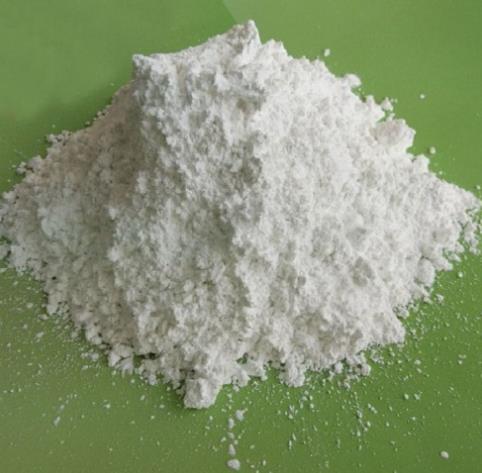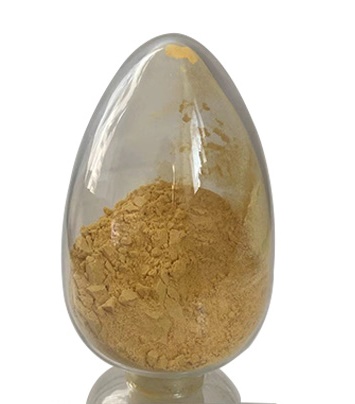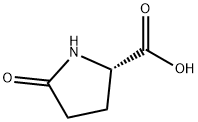L-Pyroglutamic Acid: Pharmacodynamics, Pharmacokinetics and Toxicity
Oct 12,2024
General Description
L-Pyroglutamic acid, also known as pidolic acid, is a naturally occurring amino acid derivative that plays a critical role in various biochemical pathways. Elevated levels of L-Pyroglutamic acid may indicate metabolic disorders, including glutathione synthetase deficiency and 5-oxoprolinuria, leading to metabolic acidosis. The pharmacokinetics of L-Pyroglutamic acid reveal its effective absorption through the skin and suggest a lengthy biological half-life. Toxicological concerns primarily stem from the accumulation of its metabolite, 5-oxoproline, which can result from certain medications and nutritional deficiencies. Understanding L-Pyroglutamic acid's pharmacodynamics, pharmacokinetics, and toxicity is essential for effective clinical management.
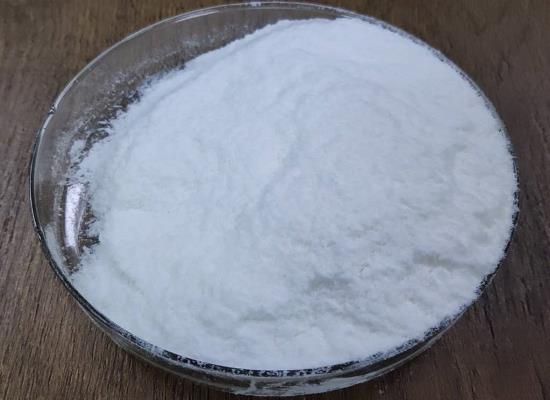
Figure 1. L-Pyroglutamic acid
Pharmacodynamics
L-Pyroglutamic acid, also known as pidolic acid, is a naturally occurring amino acid derivative that plays a vital role in various biochemical pathways. Elevated levels of L-Pyroglutamic acid in the bloodstream may indicate underlying issues with glutamine or glutathione metabolism, often linked to metabolic disorders. In biological tissues, particularly in the brain and skin, L-Pyroglutamic acid exists predominantly in a bound form, emphasizing its importance in physiological functions. However, excessive concentrations of L-Pyroglutamic acid can lead to metabolic acidosis, which is a condition characterized by an imbalance in the acid-base status of the body. Chronic elevation of L-Pyroglutamic acid concentrations is associated with several genetic metabolic disorders, including 5-oxoprolinuria and glutathione synthetase deficiency, which can lead to severe health complications. 1
Clinical Implications of Elevated L-Pyroglutamic Acid Levels
The clinical implications of high levels of L-Pyroglutamic acid are significant, particularly regarding metabolic acidosis. When the levels of L-Pyroglutamic acid exceed normal thresholds, it can result in an arterial pH drop below 7.35, causing various symptoms and health issues. In infants, symptoms may include poor feeding, vomiting, hypotonia, and an overall lack of energy, which can progress to severe outcomes such as seizures or organ failure. In adults, the signs of acidosis linked to elevated L-Pyroglutamic acid levels often manifest as headaches, confusion, and fatigue. Notably, acute increases in L-Pyroglutamic acid in the context of acetaminophen overdose contribute to high anion gap metabolic acidosis, further highlighting the need for monitoring and intervention in cases of elevated levels. Understanding the pharmacodynamics of L-Pyroglutamic acid is crucial for managing both acute and chronic metabolic conditions effectively. 1
Pharmacokinetics
Absorption and Distribution
L-Pyroglutamic acid, also referred to as pidolic acid, demonstrates specific absorption characteristics when utilized in skin conditioning agents. Studies indicate that percutaneous absorption of various concentrations of L-Pyroglutamic acid—specifically 5%, 10%, and 20%—through human skin results in absorption rates of approximately 5.97%, 6.78%, and 5.89%, respectively. This data suggests that L-Pyroglutamic acid can effectively penetrate the skin barrier, making it a valuable component in topical formulations. Regarding its distribution in the body, while concrete information on the volume of distribution of L-Pyroglutamic acid is limited, it is essential to understand that its absorption and potential therapeutic applications rely heavily on how well it disperses in biological tissues. Furthermore, preliminary studies in animal models indicate that a significant portion, approximately 30%, of orally administered L-Pyroglutamic acid is excreted unchanged in the urine, hinting at its renal elimination pathway. 2
Metabolism and Biological Half-Life
The metabolism of L-Pyroglutamic acid occurs via several intertwined biochemical pathways that highlight its role in cellular processes. L-Pyroglutamic acid can be synthesized through various routes, including enzymatic conversions from glutamine and glutamate, with critical enzymes such as glutaminyl cyclase and pyroglutamyl peptidase playing pivotal roles. Moreover, L-Pyroglutamic acid is intricately linked to glutathione metabolism, where its degradation and subsequent conversion back to glutamate are facilitated by specific enzymes like 5-oxoprolinase. This metabolic flexibility underscores L-Pyroglutamic acid's involvement in the broader context of amino acid metabolism in living organisms. The biological half-life of L-Pyroglutamic acid, while not exhaustively documented, is suggested to extend significantly, with studies indicating a half-life of about nine months under specific conditions. This extended half-life may have implications for its therapeutic effectiveness and suggests a potential for prolonged biological activity within the body. Understanding the pharmacokinetics of L-Pyroglutamic acid is crucial for optimizing its use in clinical applications and further research. 2
Toxicity
L-Pyroglutamic acid is associated with various toxicological concerns, primarily due to its metabolic byproduct, 5-oxoproline. Conditions such as glutathione synthetase deficiency lead to the excessive accumulation of 5-oxoproline, which can cause metabolic acidosis and 5-oxoprolinuria. This accumulation occurs when the body cannot convert 5-oxoproline into glutamate efficiently, resulting in elevated levels in body fluids and subsequent health complications. The toxicity of L-Pyroglutamic acid can also manifest in other metabolic disorders, such as those involving urea cycle defects. Additionally, certain medications like paracetamol and specific antibiotics have been linked to increased 5-oxoprolinuria, suggesting that L-Pyroglutamic acid metabolism can be influenced by external factors. Environmental factors, such as malnutrition and certain dietary components, can further exacerbate 5-oxoproline accumulation in some populations. Understanding the toxicity associated with L-Pyroglutamic acid is crucial for managing potential health risks effectively. 2
References:
[1] Pidolic Acid[J]. Definitions, 2020, 19 1: 78-79. DOI:10.32388/7jmtvm.
- Related articles
- Related Qustion
Hydrocortisone acetate, a synthetic derivative of the natural steroid hormone hydrocortisone, is widely used in the pharmaceutical and healthcare industries.....
Apr 10,2025Chemical Reagents4,4'-Diphenylmethane diisocyanate is a light yellow coloured solid. It is not soluble in water. It may be toxic by ingestion, inhalation, or skin absorption.....
Oct 12,2024Organic reagentsL-Pyroglutamic acid
98-79-3You may like
L-Pyroglutamic acid manufacturers
- L-Pyroglutamic acid
-
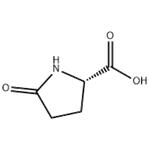
- 2025-10-30
- CAS:98-79-3
- Min. Order:
- Purity: 0.99
- Supply Ability:
- L-Pyroglutamic acid
-

- $0.00 / 25Kg/Drum
- 2025-10-29
- CAS:98-79-3
- Min. Order: 1KG
- Purity: 98.5%-100.5%
- Supply Ability: 10 tons
- L-Pyroglutamic acid
-

- $100.00/ kg
- 2025-10-29
- CAS:98-79-3
- Min. Order: 1kg
- Purity: 99%
- Supply Ability: 5000




